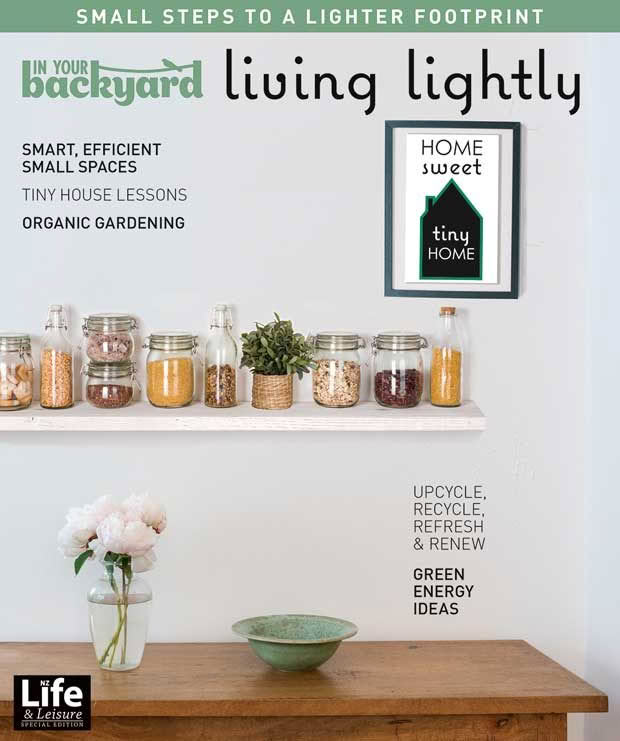Seed raising 101: Everything to know about raising plants from seeds
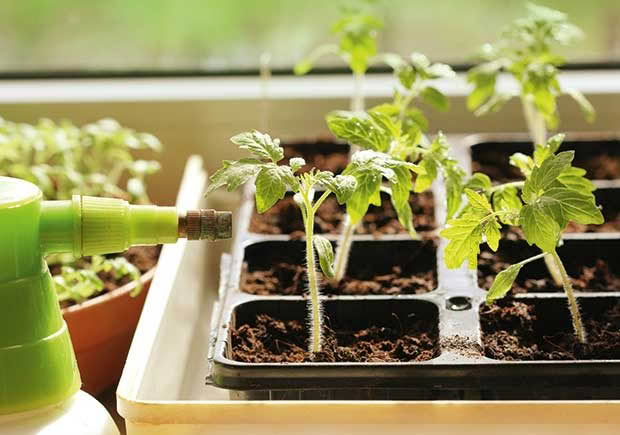
Raising plants from seed is a cost-effective way of planting out a garden.
Words: Emma Rawson
Although it’s faster and easier to buy seedlings, growing from seed allows gardeners to grow more unusual vegetables and create backyard biodiversity.
For a seed to germinate and grow into a plant it needs:
1. Soil or a growing medium
Seed-raising mix is ideal; a light soil mix that includes pumice and nutrients that encourage seedling growth
2. Moisture
Water activates the biochemistry of the dormant seed embryo
3. Temperature
Plants germinate at a heat similar to its ideal soil temperature (see our crop growing tips on page 26), although a warmer temperature will speed up growth.
Keeping a plant at a consistently warm temperature (in a greenhouse or hot-water cupboard, for example) will fast-track germination.
SOAKING AND SCRATCHING
Some larger seeds or seeds with hard exteriors, such as beetroot, need to be soaked before planting to encourage the plant embryo to break free. These seeds are often from plants native to areas with cold winters; the tough exterior protects the seed against harsh temperatures.
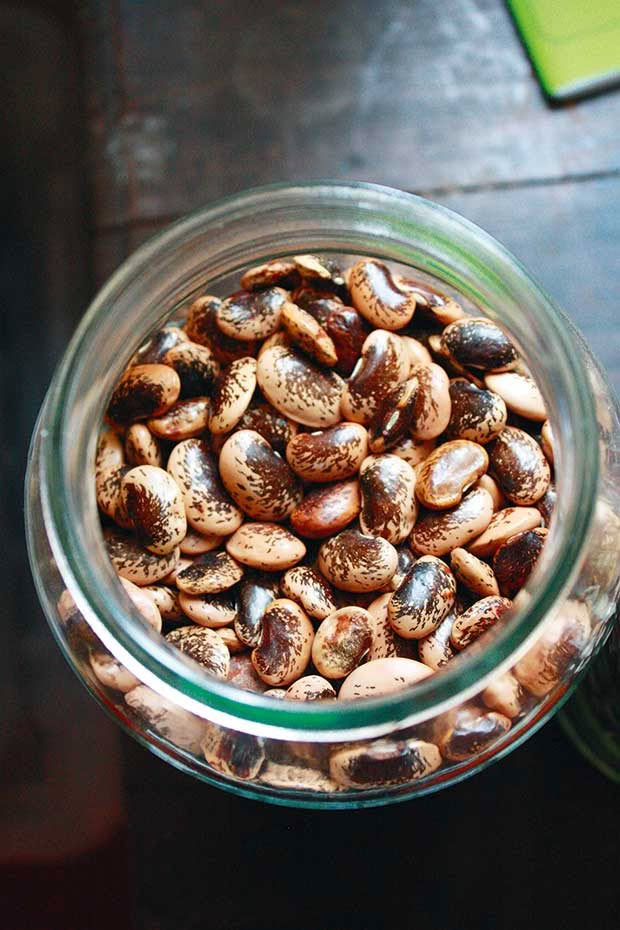
To soak, submerge seed in cold water for 12-24 hours, any longer and it will rot. Seeds that might require soaking include beetroot, peas, beans and corn.
Some seeds such as pumpkin and squash like to be scratched or ‘scarified’ with a nail or emery board to mimic the action of an animal gnawing on seed. The outer seed case is a biological advantage to protect seed from herbivores.
LIGHT OR DARK
Most seeds prefer darkness to germinate – a hot-water cupboard is ideal. However, some seeds such as lettuce prefer light.
HOW DEEP?
• As a general rule, plant a seed no deeper than twice its diameter
• Seeds planted too deeply will not reach the surface before their food reserves run out
• Fine seeds such as lettuce or celery only need to be scattered on the surface and gently pressed into the soil
• To avoid washing away seeds when watering, moisten the soil before planting, then continue to moisten daily. A water sprayer wets the soil without overwatering.
• Check seed packets for germination time, and when seedlings start to emerge, move them to a spot with natural light.
Tip: If you don’t have room for a greenhouse, try a windowsill seed propagator.
THINNING IS WINNING
It’s time to be ruthless. When seeds have germinated, thin them out to prevent overcrowding. Pull out weaker seedlings to let larger ones thrive.
Move seedlings to a bigger pot when the first true leaf emerges.
HOW TO PREVENT SHOCK
• Gradually acclimatise a plant to the outdoors. Move it from a windowsill to a spot under a cloche before exposing it to the elements.
• Be careful not to damage root systems when removing a seedling from its tray. Seaweed extract will stimulate root growth.
• Planting seedlings in biodegradable peat pots helps avoid root damage. They can be costly, so try making your own. (See seed pots, opposite.)
MOVE IT, MOVE IT
Plants don’t like being relocated. They can suffer what’s called transplant shock.
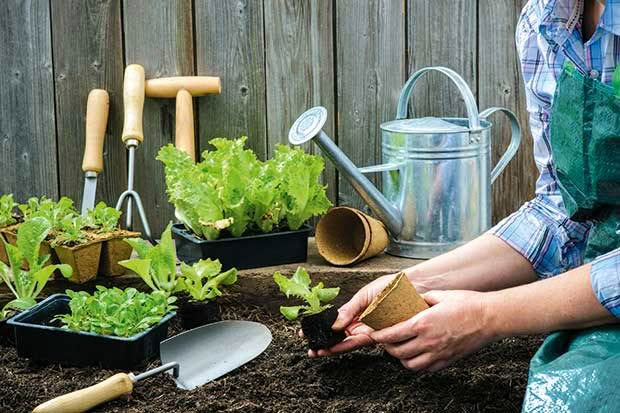
When moving a seedling from a container to the ground or by changing its growing temperature from a warm windowsill to the cold outdoors, plants may show signs of shock, including wilted, curling or yellow-scorched leaves.
HEIRLOOM vs HYBRID SEEDS
Heirloom or heritage seeds are varieties that have been saved for generations. Some say heritage seed must be a cultivar older than 100 years, but others use pre-1951 as a starting point.
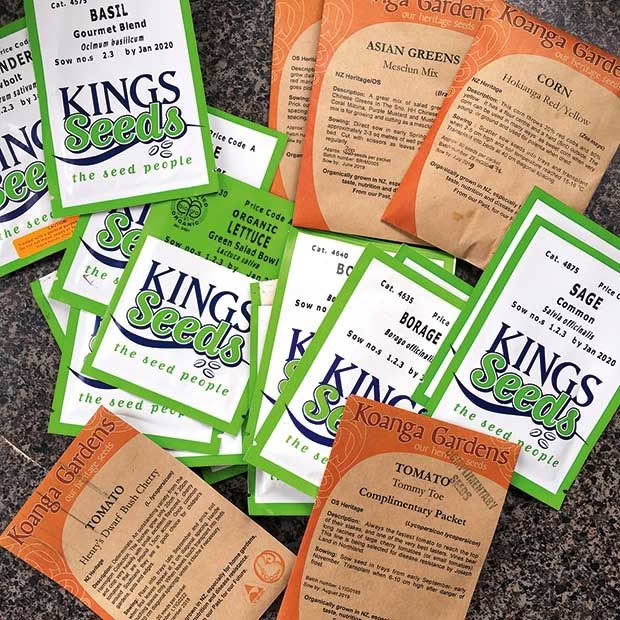
This date coincides with the introduction of industrialised farming and mainstream hybridisation of plants. Heirloom seeds are open-pollinated by nature (wind and bees); they have greater genetic variation than hybrids and are often more nutritionally rich due to environmental adaptations, and tend to be less productive than hybrids.
Hybridisation was pioneered by the scientist-monk Gregor Mendel in the 1860s and his laws of recessive and dominant inheritance are the basis of modern genetics.
An F1 Hybrid is a plant created by cross-pollinating two different parent plants to select desirable genetic traits. F1 stands for Filial 1, which means ‘first children’. Don’t try saving seeds from F1 hybrids as they may not produce true to form in the second generation.
LEAF LINGO
A true leaf is the first proper foliage leaf of a plant following the embryonic seed leaf or cotyledon.
When a seedling sprouts, the first leaves to emerge are the cotyledon, which often looks like a four-leaf clover. The next leaf to emerge will look quite different; this is the first true leaf.
This article appeared in In Your Backyard: Urban Harvest, a special edition of NZ Life & Leisure about growing food in small city spaces. Packed with advice such as how to start a productive veggie garden, the best crops, creating awesome soil, vertical growing, container gardening, hydroponics, espaliered trees and edible hedges.
The latest In Your Backyard edition is available here.
